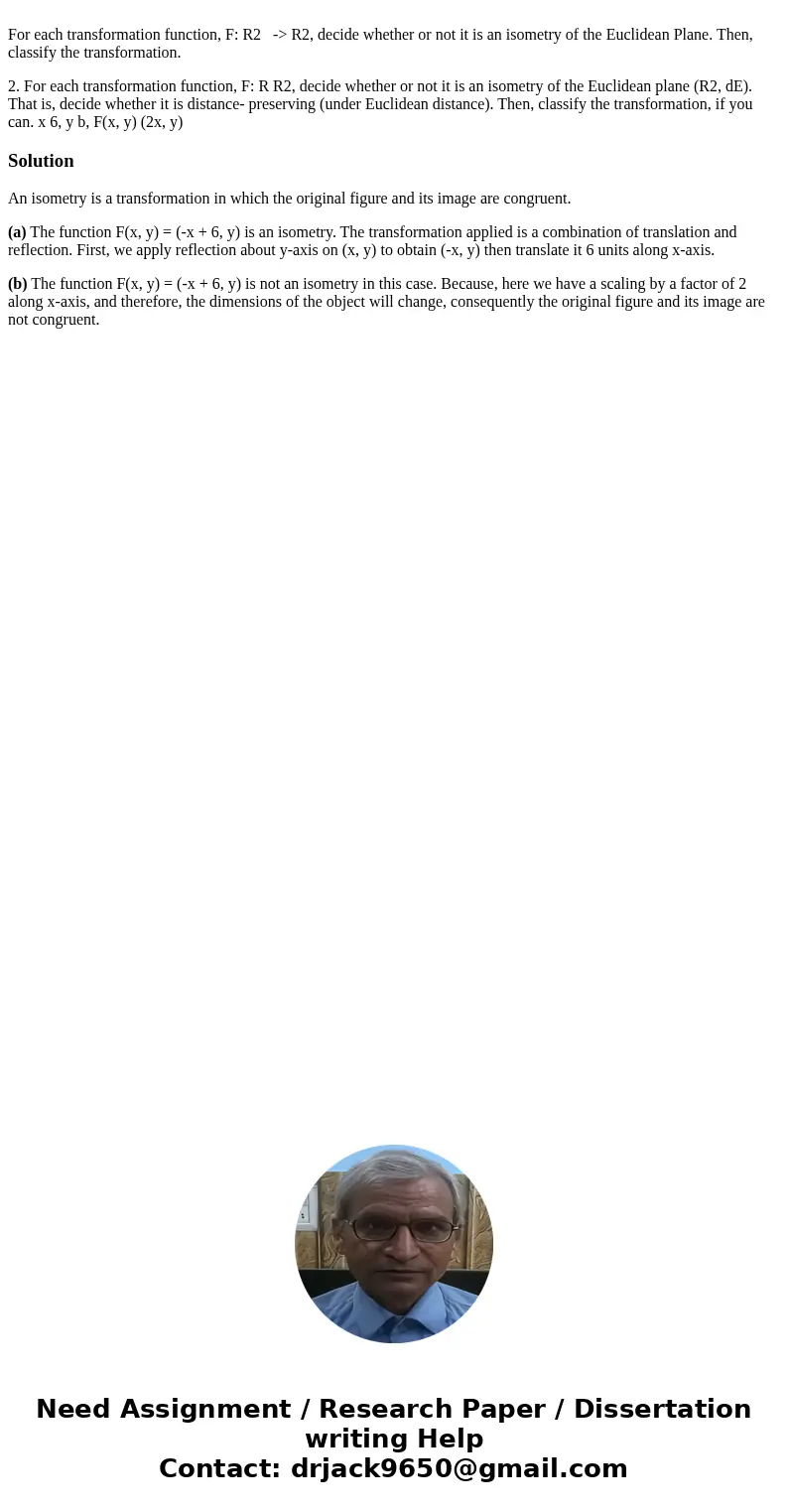For each transformation function F R2 R2 decide whether or
For each transformation function, F: R2 -> R2, decide whether or not it is an isometry of the Euclidean Plane. Then, classify the transformation.
Solution
An isometry is a transformation in which the original figure and its image are congruent.
(a) The function F(x, y) = (-x + 6, y) is an isometry. The transformation applied is a combination of translation and reflection. First, we apply reflection about y-axis on (x, y) to obtain (-x, y) then translate it 6 units along x-axis.
(b) The function F(x, y) = (-x + 6, y) is not an isometry in this case. Because, here we have a scaling by a factor of 2 along x-axis, and therefore, the dimensions of the object will change, consequently the original figure and its image are not congruent.

 Homework Sourse
Homework Sourse